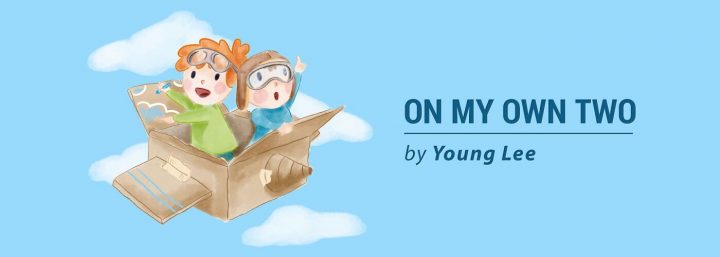A Graphic Novel Reminded Me of My Childhood Perspective of CMT
Written by |

Column by Young Lee
Through her loosely autobiographical graphic novel, “El Deafo,” author Cece Bell introduces readers to her childhood self as she tries to navigate her way through relationships and hijinks at school while managing her deafness. I write “loosely” because Bell illustrates her childhood persona not as a human child, but as a quirky and cute bunny. She writes at the end of the book that she was more interested in capturing the feelings of being a kid with hearing loss than being 100 percent accurate.
While I didn’t have struggles with hearing as a child — although some folks with Charcot-Marie-Tooth (CMT) experience hearing loss — reading Bell’s words and looking at her illustrations reminded me of feelings I had as a child with CMT that I had perhaps forgotten or were more complicated than I had previously realized.
I’ve written about my childhood experiences with CMT. I wrote that I wasn’t too shy about wearing my ankle-foot orthoses (AFOs) and how I used to launch them into the air with a kick and a twist of my ankle and chase my friends while swinging them over my head. Looking back, I interpreted these actions as those of a free-spirited kid — naive, but mostly unashamed of his disability.
However, “El Deafo” reminded me of habits and feelings that may portray a more mixed experience.
One passage in particular struck me because I think it articulates something about my childhood perspective on disability that I never thought to put into words: “I was a deaf kid surrounded by kids who could hear. I felt different, and in my mind, being different was not a good thing. I secretly, and openly, believed that my deafness, in making me so different, was a disability. And I was ashamed.”
I don’t think I ever feared my CMT. Upon reflection, it wasn’t the CMT that I found debilitating, but my belief that being different could potentially hamper my attempts to make friends at school. As an adult, I may not feel constrained in this aspect because I feel as if I can expect a certain level of maturity from my peers.
But as a kid who is still discovering what’s acceptable and unacceptable and what’s cool and uncool, being different and unsure about what that means for your social status is scary.
Bell’s whimsical art style brought to mind how I used to draw as a kid. It invited me to revisit my childhood perspective. During elementary school, I created drawings for each of my binders and for every class project, and I doodled along the borders of my homework assignments.
I also sketched myself sometimes, cartoony self-portraits. But after looking at Bell’s drawings, it occurred to me that as a child I never drew myself with AFOs. Looking back, I wonder if this was a subconscious rejection of the “disabled label” I might have been afraid others would pin on me.
This recent reflection has called into question the way I view my behavior then. I wonder if tossing my AFOs in the air or taking them off from under my pants to place on tables or chase friends with were signs of my acceptance of the AFOs and a new perceived identity. Or perhaps they were drastic attempts to trivialize something that a child perceived as a big hurdle to connecting with his classmates.
Either way, I was a fairly happy kid. I don’t have any major regrets about my childhood. But perhaps my feelings were more mixed than I had believed. Children have complex emotional lives just as adults do, and great novels about childhood such as “El Deafo” remember this. We should, too.
***
Note: Charcot-Marie-Tooth News is strictly a news and information website about the disease. It does not provide medical advice, diagnosis, or treatment. This content is not intended to be a substitute for professional medical advice, diagnosis, or treatment. Always seek the advice of your physician or other qualified health provider with any questions you may have regarding a medical condition. Never disregard professional medical advice or delay in seeking it because of something you have read on this website. The opinions expressed in this column are not those of Charcot-Marie-Tooth News or its parent company, Bionews Services, and are intended to spark discussion about issues pertaining to Charcot-Marie-Tooth.





Leave a comment
Fill in the required fields to post. Your email address will not be published.